The A Team
Slingshot pull together a solid squad of riders and media crew for their recent gear shoot in the high energy environment that is Cabarete in the Dominican Republic. Cue epic conditions and the occasional mid-air drone rescue…
READ MORE
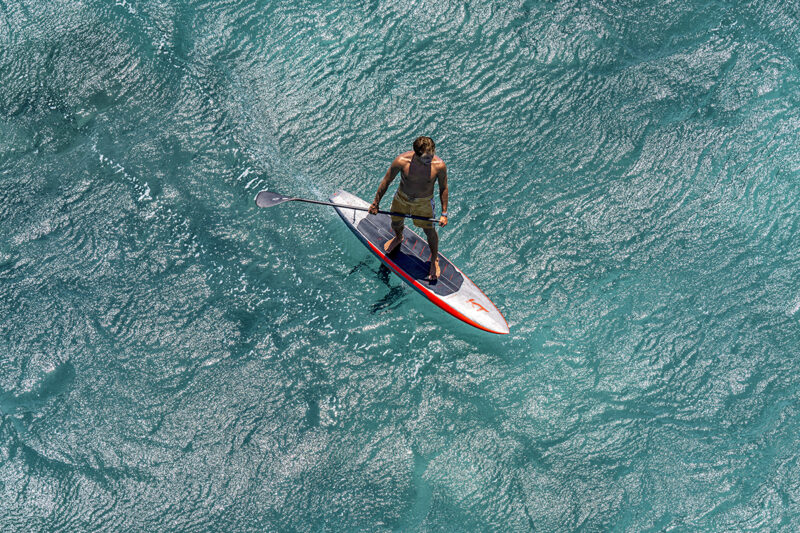
Trusted by world famous icons such as Kai Lenny, KT have been at the forefront of foil board building for years. They just released their most comprehensive downwind range yet… and we went in hard with the questions!
Well, lots to cover here. Your latest downwind offering spans from the full-glide Dragonfly downwinders to the compact Super K2s. Can you give our readers a bit of an overview of each?
Sure thing! The Dragonfly 3 is the most versatile board, excelling in downwind, lightwind winging, surf, and even inland foiling. Balanced in glide and stability, it’s the go-to for all-around use. The Crossing 2 is built for speed and distance – longer, narrower, and tuned for quick lift and flatwater release. It handles chop well and covers ground efficiently. The Dragonfly Surf 2 is compact, surfy, and responsive – ideal for tight swell, waves, and crossover use between surf, wing, and SUP, and the Super K2 is our most compact board, covering foil assist, parawing, prone, and short-period downwind. Fast to release, yet very stable, it's available in 12 sizes for maximum versatility.
With the Dragonfly 3 and Crossing 2 models, what have been the key upgrades in terms of shape, stability, or glide over previous generations?
We refined nose/tail aerodynamics to reduce windage, improving crosswind handling and making volume feel invisible. A new double concave hull improves stability and takeoff. All Dragonfly boards now have a 1° foil box angle, lowering stall speed and easing takeoff. Decks match this angle, enhancing foot-to-foil connection. Standard width is now 18.75″ for Dragonfly 3, while the Crossing 2 narrows to 17.75”, gaining unexpected stability via the new hull shapes.
Can you explain how the Hollow Carbon build impacts the ride in the Dragonfly Crossing 2, especially in long-distance, low-energy conditions?
It’s our lightest, stiffest build with minimal swing weight. The board responds faster, paddles more efficiently, and feels smaller in the air. The structure improves buoyancy-to-drag ratio and conserves rider energy on long or flat runs – ideal for endurance performance.
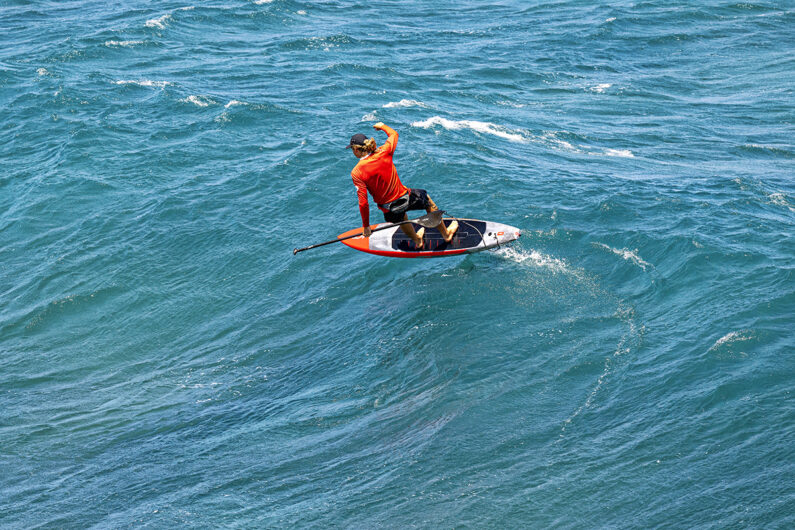
On the other end of the range, the Super K2s are a different beast. What kind of rider did you have in mind for these shorter, more compact DW boards?
The Super K2 is for multi-discipline riders. It suits foil assist, parawing, prone, and downwind in short period, steep chop. It’s compact yet stable, with great early lift and handling in chop. For parawinging, it’s the most stable board we make while still performing at a high level. It recovers easily, fits all foil sizes, and has been our top custom request – now offered in 12 sizes.
How does the Super K2 Pro Carbon differ from the standard Super K2?
Pro Carbon is lighter, stiffer, and more responsive. It wraps the core in multi-layer carbon and high-density foam, increasing durability without added weight. It delivers better feedback through turns and pumping and is built to withstand long-term use and travel.
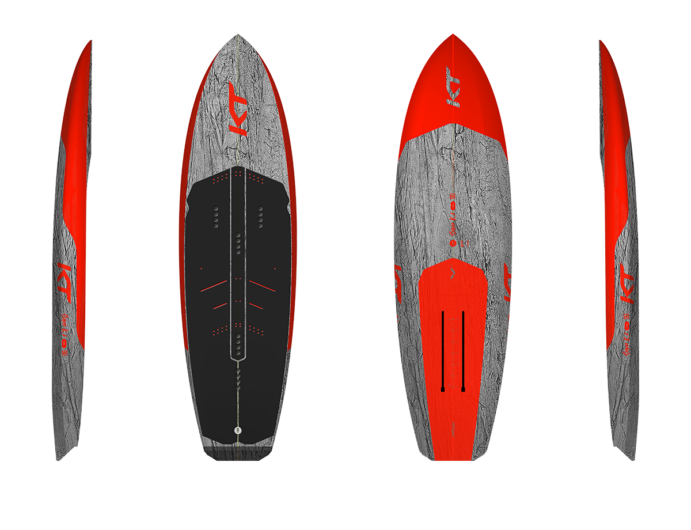 |
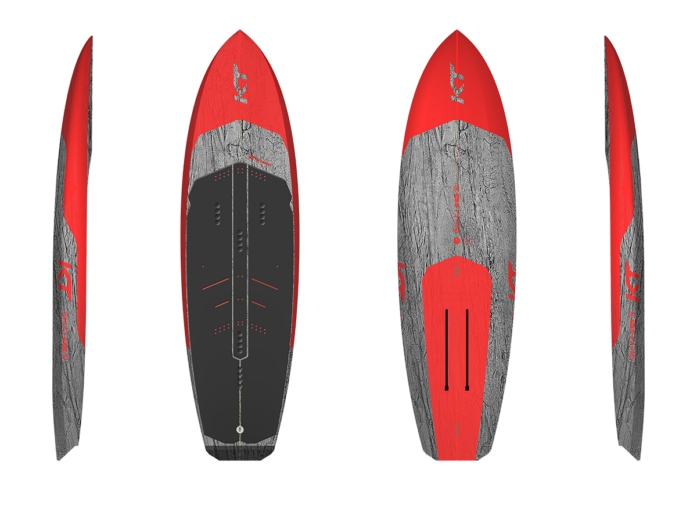 |
From your perspective as seasoned board builders, what are the biggest design challenges when creating a board that needs to handle both early lift in low-speed conditions and high-speed stability on foil?
It’s a constant balance between length, width, rail flow, and volume. Boards must lift early but stay smooth and controlled when flying. Key adjustments to rocker, hull shape, outline and deck geometry make the board move with the rider. Our aerodynamic rail design improves high-speed stability and lets riders cut any line they want in full control.
Are you seeing riders blend disciplines more now, for instance using the Super K2 for both downwind, wing, and prone foiling? And does that greatly influence design decisions?
Definitely. The Super K2 was designed for this. Its compact shape and hidden volume let it cross from prone/surf to wing and foil assist. Parawing especially has increased this crossover. While it’s not as fast to takeoff as the Dragonfly in big swell, its stability and fun factor balance that out. We added footstrap inserts and a big size range to suit all riders. The Surf 2 also sees crossover use, especially in short period swell. Its width and glide suit SUP, wing, and surf for smaller or lighter riders.
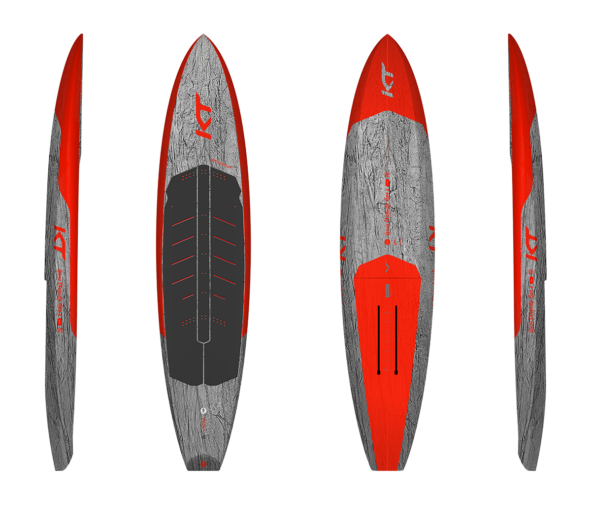 |
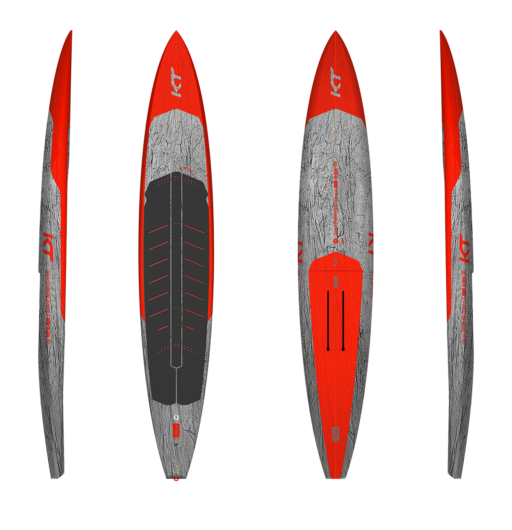 |
For someone looking to get into downwind SUP foiling for the first time, where would you steer them within this range, and what should they be looking for in their first board?
Start with the Dragonfly 3 – size it about 40L over your body weight in kilos. It’s stable, fast to release, and forgiving. The Surf 2 is another good option, especially in larger sizes (130-140L) for heavier riders. Look for stability with enough glide to get going. Falling is part of learning, but a board that gets up quickly makes all the difference.
There’s a clear focus on using premium materials across the KT lineup. What does Pro Carbon or Hollow Pro Carbon actually mean for the rider, in terms of durability and performance?
Pro Carbon is lighter and more responsive than standard layups, with excellent durability. It’s easier to pump and handles wear better. Hollow Pro Carbon takes it further – lightest swing weight, highest stiffness, and best responsiveness, especially in long boards. It makes a 9′ board feel 2′ shorter in the air, saving your legs and boosting control. Our race team rides this for peak performance.
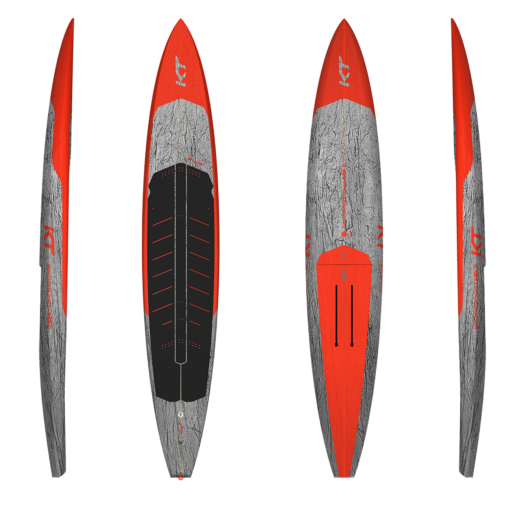 |
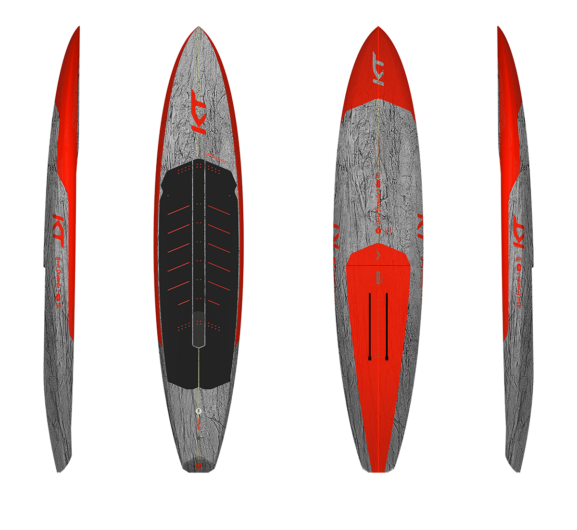 |
And finally, you have a pretty robust pro team. What’s their feedback been like on this range?
Our entire team has been hands-on – Ryan Arzy, Elliot Leboe, Logan Bediamol, Casey Hauser, Adam Lewis, Skeeter Tichnor, Kane de Wilde, Otis Buckingham, Ridge, and Kai Lenny have all helped shape these models. Feedback from customers and shops worldwide also plays a huge role. That loop drives constant improvement and keeps us pushing forward.
Slingshot pull together a solid squad of riders and media crew for their recent gear shoot in the high energy environment that is Cabarete in the Dominican Republic. Cue epic conditions and the occasional mid-air drone rescue…
READ MORENicholas Weighall takes on the Koa Kai triple crossing challenge, a series of downwinders from island to island in Hawaii, culminating in the notorious 40-mile Moloka‘i 2 O‘ahu run.
READ MOREFrom its origins as a one-man engineering experiment to a globally respected mast manufacturer, Cedrus founder Kyle Lobisser certainly has a story to tell about his journey to date. Using a precision-driven, data-led approach to mast making, and with sustainability high on the brand’s agenda, Cedrus is proving that the mast can be as performance-defining as the foil itself…
READ MORE